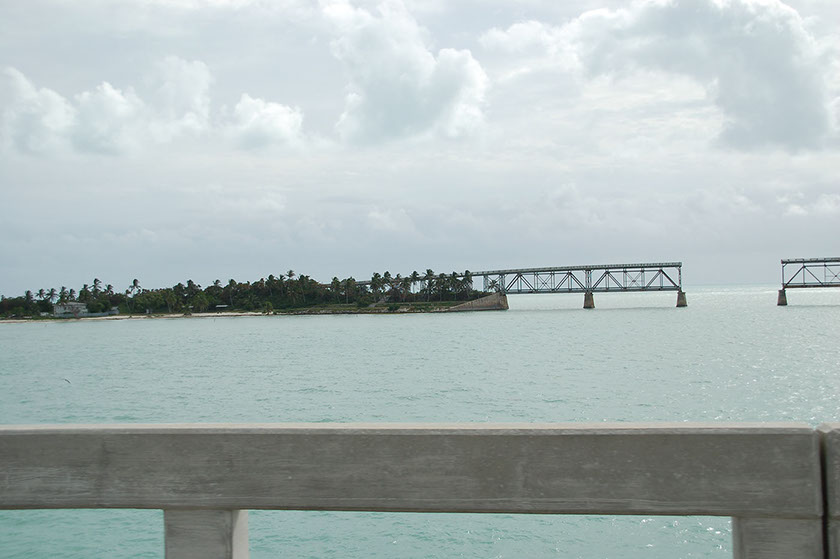The abolition of place is also the consummation of Journey, it is the travelers last pose
The photos in this series depict a tiny island; one of hundreds in the chain known as the Florida Keys, all connected by a system of bridges and causeways. The longest and tallest bridge connects Vaca Key with the Spanish Harbor Keys; it is seven miles long and passes but does not touch the tiny Pigeon Key. Pigeon Key is a non-place. It is a space formed in relation to certain ends, transport, transit, commerce, and leisure. It is one of those places that seem to exist only in the words that evoke them. A banal utopia. Pigeon Key is a place we inhabit when we are driving past it on the Seven Mile Bridge. Traveling on this bridge reveals landscapes reminiscent of aerial views or epic cinema. The landscape keeps its distance, and the bridge seems to avoid all the principal places to which it takes us. Pigeon Key affords the ideal vantage point for photos about super-modernity because it combines the effects of movement and distance (the horizon) with those of the heterocosm; the replacement of fact with realized dreams.
Utopias can be horizontal as well as vertical. Horizontal Paradise implies movement and a 'search'. Ponce de Leon spent thirty years searching for the fountain of youth in the swamps of southern Florida. The ocean that surrounds Pigeon Key forms a barrier that facilitates the 'search', the long arduous travel across water (not so arduous now with the seven mile bridge) defines Paradise as the process of finding it. Paradise becomes continuous movement. Pigeon Key is a 'Spoilt Paradise'; it is a garbage dump, piled high with the remains of half finished commercial projects, imported vegetation and residential fantasies (and most recently telecommunication towers). The spoiling of paradise creates the continual need for finding it anew. These photos comprise a visual document of this search. They are meant to adjust our gaze up and away from the spoilt world towards a visual euphoria, but then they turn back on themselves, they become their own object and then seem to dissolve under a vague multitude of visual cliché and similarity. They are depictions of non-places (on the right of the bridge, on the left of the airplane) but they are also meant to depict a state of para-modernity; a botched modernity, were space is shrinking, were objects in the landscape play no part in any synthesis but simply bear witness during the journey.







